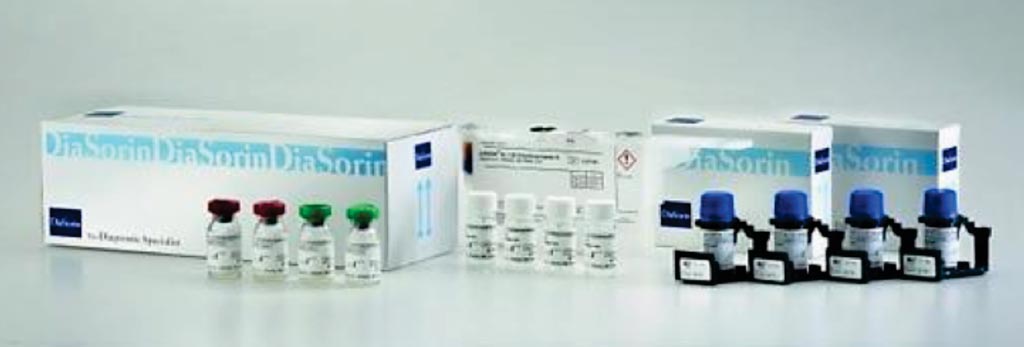Vitamin D Status Determined in Older Adults
By LabMedica International staff writers
Posted on 25 Jun 2019
Vitamin D has a known role in bone health, with growing evidence for beneficial effects on muscle strength and other non-skeletal outcomes. Vitamin D deficiency is often associated with adverse health outcomes in older adults. The circulating 25-hydroxyvitamin D (25(OH)D) status predominately relies on UV exposure.Posted on 25 Jun 2019
Several known age-related adverse health outcomes, including bone loss, fracture risk, and falls, are associated with suboptimal serum 25-hydroxyvitamin D (25(OH)D) status (the main circulating and diagnostic metabolite of vitamin D) with further evidence for non-skeletal roles in carcinogenesis, immune function, cardiovascular disease, dementia, and all-cause mortality.

Image: The complete extraction-free, fully automated Liaison XL 1,25 dihydroxyvitamin D radioimmunoassay kit (Photo courtesy of DiaSorin).
Irish scientists led by those at Trinity College (Dublin, Ireland) investigated vitamin D deficiency in community-dwelling, older adults, residing at latitudes 50⁰–55⁰ north and the study included 6,004 adults, aged over 50 years. Deficiency was categorized by two criteria: Institute of Medicine (IOM) (<30 nmol/L) and Endocrine Society (ES) (<50 nmol/L). Serum 25(OH)D was assessed from a fasting blood sample and concentrations of 25(OH)D were analyzed using the Liaison 25-hydroxyvitamin D immunoassay which yields a lower detection limit of 3.0 nmol/L.
The investigators reported that overall, the prevalence of deficiency (<30 nmol/L and <50 nmol/L) was 23.7% and 55.3%, respectively. For older age categories of ≥60 years and ≥65 years, vitamin D deficiency (<30 nmol/L) and deficiency (<50 nmol/L) were similar at 22.6% and 22.5% and 54.2% and 53.9%, respectively. The highest prevalence of deficiency (by IOM) was noted in women aged 80 years and older (36.8%), with the lowest in men aged between 70–79 years (17.3%). The overall mean 25(OH)D was 48.7 ± 23.5 (range; 9–239 nmol/L). Residing in the south of England was associated with a 22.8% lower risk of deficiency.
Maria O'Sullivan, PhD, an Associate Professor in Nutrition and a senior author of the study, said, “'Our study identified factors associated with vitamin D deficiency, including being aged 80+ years, obesity and sedentary lifestyles; all of which are increasing traits in western populations. Furthermore, this is one of the few studies to highlight the importance of non-white ethnicity in vitamin D deficiency in a large study of ageing. The findings are valuable in developing targeted strategies to eliminate vitamin D deficiency (at 30nmol/L) in older populations.”
The authors concluded that the high prevalence of vitamin D deficiency identified in the cohort highlights the need to raise awareness and have adequate public health strategies for achieving optimum vitamin D concentrations to support successful ageing. Based on their findings, there is a particular need to raise awareness and target those most at risk of vitamin D deficiency. The study was published on June 1, 2019, in the journal Nutrients.
Related Links:
Trinity College













